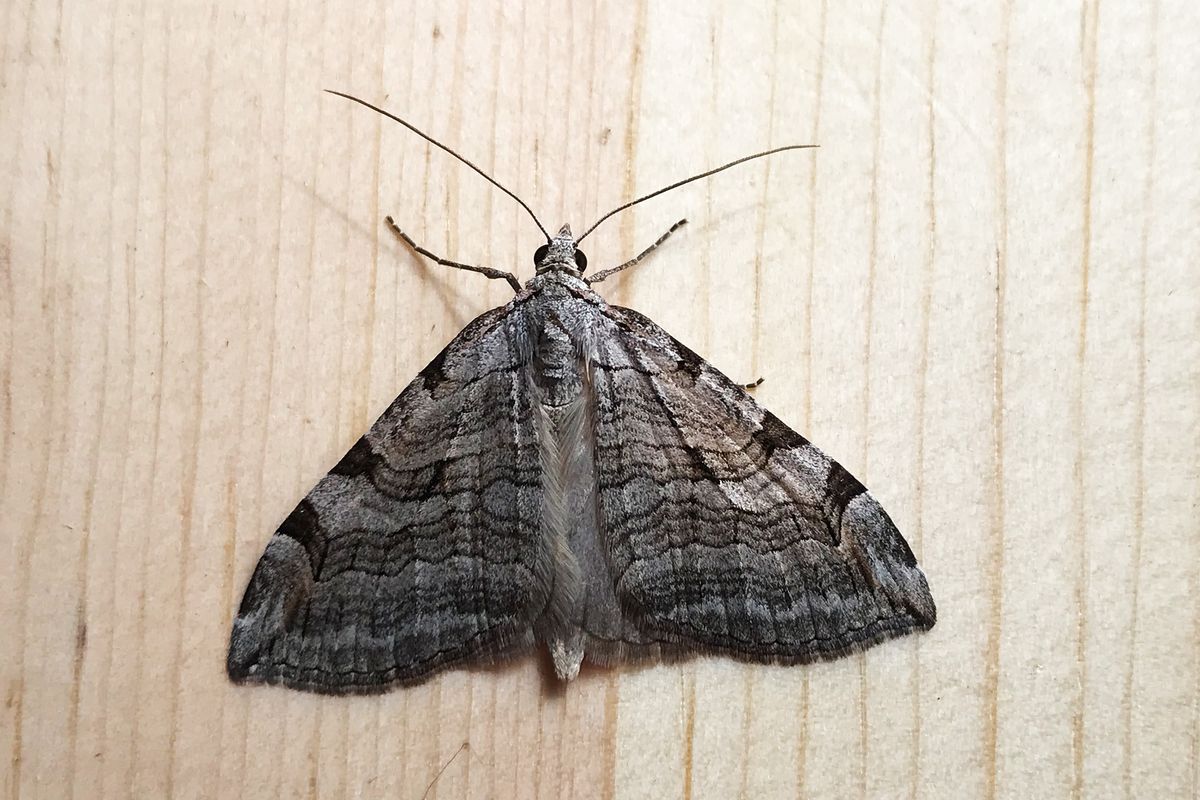In the Garden: Susan Mulvihill gets trapped by new hobby – mothing

How would you like to take up a new hobby that is fun, educational, can be done in your yard and doesn’t require expensive equipment? I’m talking about backyard mothing, and it’s probably unlike any other hobby you’ve ever undertaken.
Mothing involves setting up a simple trap near a light in the evening to capture moths, the majority of which are nocturnal. In the morning, you carefully place the moths into small containers, cool them down in the refrigerator, remove them later to photograph them and then release them back into the environment.
I first heard about mothing from a photographer friend who started taking photographs of these amazing creatures this year. He learned how to catch them from Carl Barrentine, Ph.D., a retired professor who got into mothing about 10 years ago.
“In 2009, there was a man creating videos of the insects he found at a wildlife refuge in the Midwest and posting them on YouTube,” Barrentine explained. “Those inspired me, so I started photographing the moths that were showing up in my yard and discovered how difficult they are to identify.”
If you think there are just a few moths in the Pacific Northwest, you’ll be surprised to learn there are as many as 3,000 distinct moth species. Barrentine moved to Spokane three years ago and feels he is on track to document the nearly 700 species he has found in his backyard since then.
This summer, he created a series of mothing videos in celebration of National Moth Week. These educational, enjoyable videos cover the basics of setting up a moth trap, how to handle them and great resources to help with their identification. Refer to the information box for a link to his videos as well as other good references.
I was able to build my own moth trap with these easy-to-acquire items: a collapsible mesh clothes hamper for $6, a black CFL lightbulb for $10 and several empty egg cartons. I also needed 2-ounce plastic mini cups with lids for temporarily holding the moths I want to photograph. The egg cartons provide moths with a place to hide once they are in the trap.
Here is the basic set-up: Place the egg cartons in the bottom of the hamper. Replace a porch lightbulb with the black light, and hang the hamper just below it. Turn on the light at dusk. In the morning, check the trap early while it’s still cool and sort through the egg cartons to see what you’ve caught.
Place each moth you want to photograph into a plastic mini cup and snap on the lid.
Remember: They are quite fragile. It’s possible to avoid handling them directly if you’re careful. Don’t worry; they don’t bite. Set them into your refrigerator to cool them down; this temporarily makes them sluggish so they’ll sit still for their photo shoot. Afterward, release them outside.
Barrentine waits until the cool morning hours of the next day, places each moth individually on a small board and rotates it as needed to frame the moth in his camera’s viewfinder.
He prefers photographing them in natural light. His camera of choice is a Pentax WG-3, but it’s possible to get clear photos with a cellphone, as well.
Identifying moths is the challenging partso be sure to take advantage of the helpful resources he has suggested.
“You don’t need to know what you’ve got; you just need a good photograph of the moth,” Barrentine said. “It’s also helpful to take photos from different perspectives. Someone can help you identify it. There are websites filled with people who are willing to help you.”
In the Inland Northwest, moth season runs from early March to about mid-November. Different types of moths are active during the spring, summer and fall. They can tolerate hard frosts but not snow cover.
I’ve certainly become hooked on mothing, and it’s clear Barrentine thrives on it.
“It’s important to keep intellectually fit as you age. Mothing keeps me sharp,” he said. “It’s really hard to learn your moths, but it’s so rewarding, too. You feel like Charles Darwin stepping off the Beagle because every morning you go out, you find new creatures you never knew existed.”
Learn more about mothing in this week’s video at youtube.com/susansinthegarden.
Contact Susan Mulvihill at susan@susansinthegarden.com.